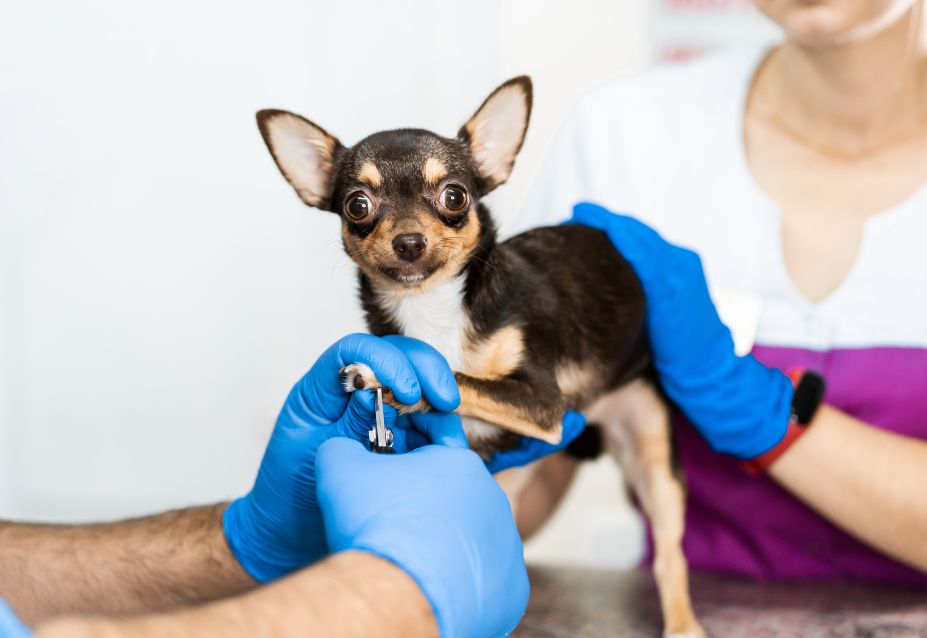Can Cats Be Groomed Like Dogs? (Find Out)
Can Cats Be Groomed Like Dogs? (Find Out)
Normally cats keep them clean and groomed through continuous licking. In most cases, it is not necessary to groom them, especially cats with short hair. However, cats with thick fur and long hair may require grooming if they accumulate dirt and mats. But, can cats be groomed like dogs?
While cats can be groomed just like dogs in terms of brushing, bathing, hair trims, nail trims, ear cleaning, eye cleaning, and mat removal, performing these tasks on cats is very hard. Most dogs find grooming to be a rather enjoyable experience, but cats, on the other hand, exhibit an entirely different demeanor.
They tend to display hostile tendencies during grooming sessions, often turning to aggressive behaviors. If you plan to groom your feline companion, be prepared to encounter scratches and bites. It is not uncommon for groomers to opt for sedation as a means to carry out grooming procedures, particularly when faced with exceedingly aggressive cats.
This precaution becomes indispensable due to the potential risks of harm, not only to the groomers themselves but also to the cats throughout the grooming process. Amidst these disparities, there exist certain shared aspects.
In this article, I will discuss the similarities and differences between cat grooming and dog grooming.
Similarities in Grooming Practices
1- Brushing: Both cats and dogs benefit from regular brushing to maintain their fur's health. Brushing helps eliminate dirt, debris, and loose hair, avoiding tangles and matting. Yet, the frequency and type of brush required might vary due to the length and texture of their coats.
2- Trimming Nails: Cats and dogs both need nail care to prevent discomfort and excessive growth. While dogs often need more frequent nail trimming because of their outdoor adventures, indoor cats also need regular nail upkeep.
3- Cleaning Ears and Eyes: Cats and dogs can develop wax buildup and eye discharge that demand occasional cleaning. Cleaning these areas is vital to prevent infections and discomfort.
4- Bathing: Cats and dogs may occasionally require baths, although the need varies. Cats have a knack for self-cleaning thanks to their rough tongues, but certain situations, such as encountering bad odors or skin issues, might necessitate a bath.

Contrasts in Grooming Practices
1- Self-Care Habits: Cats are known for their meticulous self-grooming, using their tongues to maintain their fur. Dogs may rely more on external grooming, underscoring the importance of regular grooming sessions.
2- Water Sensitivity: Cats are generally less comfortable with water compared to dogs. While some dogs enjoy water activities, many cats dislike baths. Grooming a cat might demand extra patience and a gentle touch during bath time.
3- Grooming Frequency: Cats typically need less frequent grooming than dogs. Their self-grooming behaviors help keep their coats reasonably clean, whereas dogs tend to get dirtier during outdoor endeavors.
4- Grooming Approaches: Grooming methods can differ significantly between cats and dogs due to their distinct body structures, fur types, and personalities. Dogs might tolerate longer grooming sessions, whereas cats might prefer shorter, more focused grooming moments.
5- Grooming Tools: Although certain tools like brushes are shared between cats and dogs, others are unique to each species. For instance, cat nail clippers have a different design from dog nail clippers due to the varying nail shapes.
Check out some interesting guides about dog grooming on petzooie.com
How to Groom a Cat?
Cats and water aren't typically a natural mix, but did you know that cats can come to enjoy grooming? In most cases, cats are adept at grooming themselves, but there are times when they might need a bath or nail trimming.
Employ our suggestions for gentler ways to help your cat stay relaxed while providing skillful grooming. Here are a few top recommendations.
1. Introduce Grooming Early: Commence your cat's grooming routine during their youthful stages. Young kittens are more receptive to grooming due to their innate familiarity with maternal grooming. Gradually acclimate older cats to handling, but starting young is ideal.
2. Regular Brushing Regimen: For short-haired felines, a weekly brushing suffices, while long-haired cats benefit from 2-3 sessions weekly to deter matting and hairball formation. If your cat is restless, keep brushing sessions brief. Employ a suitable brush like a comb, soft rubber brush, or bristle brush to eliminate excess fur.
3. Stress-free Bathing: Bathe your cat when they are calm to avoid undue stress. Employ a sink or tub with shallow water. Gently pour water using a bottle, starting from the neck, and exclude the face. Utilize cat-safe shampoo specifically formulated for felines.
Rinse thoroughly with clean water, ensuring no shampoo residue remains. Afterward, dry your cat meticulously using a large towel. Dry shampoo can be an alternative for water-averse cats.
4. Attentiveness to Ears: During bathing, assess the ears and ear canals for any discharge or redness. If necessary, use cat ear cleanser according to product instructions. Utilize a cotton ball to clear debris and cleanser, avoiding Q-tips due to their potential to harm the ear.
5. Cat Claw Care: Trim your cat's claws every few weeks to prevent overgrowth that might lead to injury or snagging. Familiarize your cat with paw handling before attempting trimming. When both you and your cat are prepared, utilize cat nail trimmers. Extend each paw gently to prevent claw retraction. Gradually trim a small portion, ensuring the quick is avoided.







